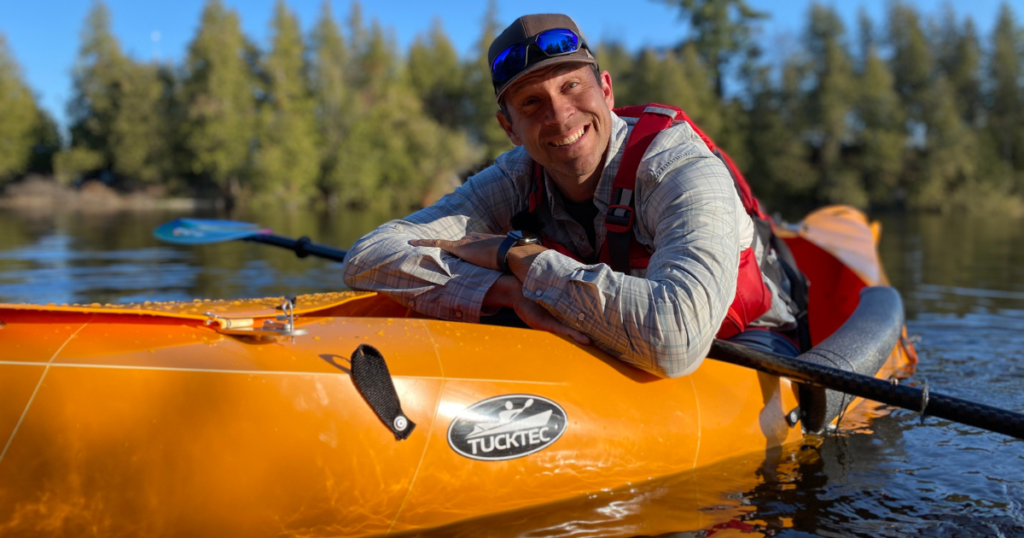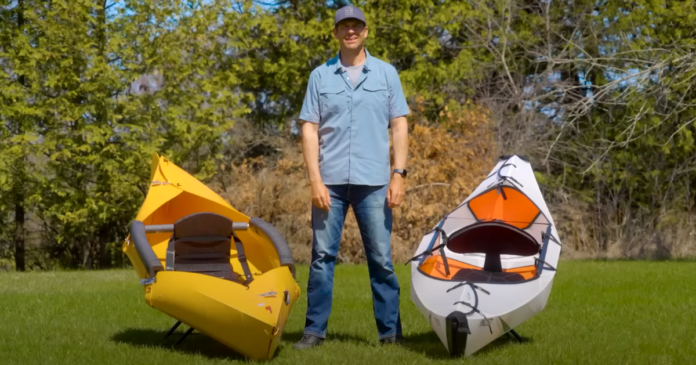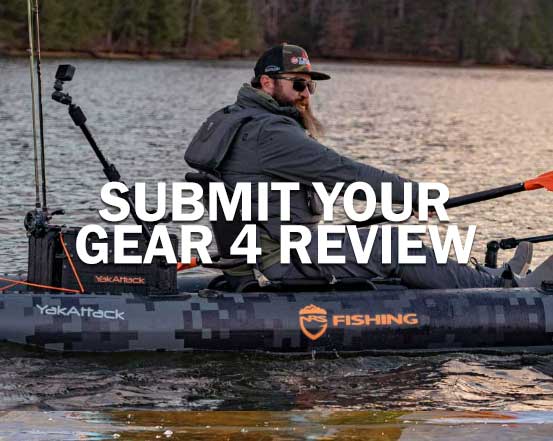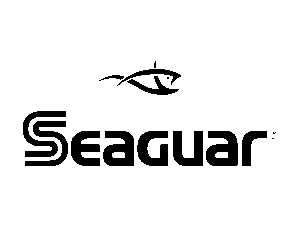In today's breakdown I'm going to be comparing two of the most popular portable (specifically, foldable) kayaks that come in under $1,000, the Oru Kayak Inlet vs Tucktec. The portable kayak market has transformed enormously over the past decade. It used to be the case that the only two options were cheap inflatables or really expensive skin-on-frame kayaks.
Nowadays, every notch on the minuscule to remortgaging price spectrum has been occupied, and with different styles. One of the more creative designs to crop up is the folding kayak.
But since there are so many options, the challenge becomes not so much which style of portable kayak to buy, but which specific model within that class best suits your needs and preferences. I hope that by comparing these two juggernaut sellers, you can determine if the Oru Kayak Inlet or the Tucktec Kayak is up your alley. Let's get into it!
ABOUT THE ORU KAYAK INLET
Price: $949 (USD)
Length: 9'6″
Width: 30″
Weight: 20 LBS (9 KG)
Capacity: 275 LBS (125 KG)
The Oru Kayak Inlet also comes with a 30-Day Satisfaction Guarantee and a 1-Year Warranty.
ABOUT THE TUCKTEC KAYAK
Price: $499 USD
Length: 10′
Width: 30″
Weight: 28 LBS (13 KG)
Capacity: 300 LBS (136 KG)
The Tucktec Kayak comes with a 90-Day Satisfaction Guarantee and a 3-Year Warranty.

Round 1: Portability
How much does the Oru Kayak Inlet weigh?
At a mere 20-pounds, the Oru Kayak Inlet is definitely the lighter of the two competitors. In fact, legitimate kayaks don't come much lighter than that. Also, when folded up, the Inlet makes a nice, tight, self-contained carry-case. It's basically a little briefcase. And finally, assembly only takes a few minutes and is easy to figure out. I have to give the Oru Kayak Inlet a 10/10 for portability.
How much does the Tucktec Kayak weigh?
As for the Tucktec Kayak, this thing still only weighs in at 28-pounds and also folds into a similarly sized package. It's just not quite as slick as the Inlet. A problem I can anticipate is pieces falling out of the tube-structure when transporting it around. Assembling the Tucktec was also quick, but involved a pinch more figuring than the Inlet. Nonetheless, the Tucktec is still ridiculously portable and I give it a 9/10 in this department.
Round 2: Stability
Are folding kayaks stable?
The Oru Kayak Inlet is a 30-inch-wide boat, so it's inherently stable while sitting flat and even balances on a slight edge reasonably well. I'd feel comfortable putting pretty much anyone in this. The Tucktec Kayak is the exact same width and also provides significant stability. You certainly don't have to be a pro to stay dry in either of these.
Round 3: Performance
Are folding kayaks any good?
For the purposes of this comparison I looked at each kayak's speed, tracking (i.e. ability to hold a course), maneuverability, and ability to handle rougher waters. The Oru Kayak Inlet is a sub-10-foot boat and therefore, not designed for speed or traveling long distances. Rather, it aims to be a stable, fun, and portable vessel for general enjoyment. That being said, for what this kayak is, I was impressed by its ability to cut through the water and hold a line, even without a rudder or skeg. It also maneuvers very well. However, the Inlet is for flatwater and flatwater only. Whether modest river waves or wind waves, this kayak will easily swamp and send you swimming for the shore.
As for the Tucktec, all the performance attributes of the Inlet essentially overlap with this kayak. The one extra standout is its drop-skeg system, which gives it that little extra trackability. It was a calm day when I tested this out, but with some wind, the Tucktec's skeg might come even more into play.
Can Oru Kayaks sink?
Both the Inlet and the Tucktec are for flatwater and flatwater only. Whether in modest river waves or wind waves, these kayaks will easily swamp and send you swimming for the shore.

Round 4: Durability
How many times can you fold an Oru Kayak?
Time and real-world conditions are always the true test, but Oru Kayak makes the bold claim that the Inlet is good-to-go for 10,000 folds! I can't imagine who would ever come close to that milestone. In terms of what I can ascertain from appearances, the Inlet looks solid for such a light boat and all the trim and little details look like they were well-thought-out. The 1-year warranty isn't the best deal around, but it still shows that Oru Kayak trusts their craftsmanship.
Are folding kayaks durable?
The Tucktec Kayak is one big piece of plastic, which suggests surprising durability, again, relatively speaking for such a light boat. The weak point would of course be on the fold lines, but Tucktec has the more vulnerable ones reinforced with some extra plastic pieces. If I had to caution users about anything, it would be the little things like the tiny straps, ropes, footpegs and the foam sponsons, which seem like they would get pummeled by continued sun exposure. Nonetheless, Tucktec says that it's good for thousands of folds, and the 3-year warranty backs up that claim.
Round 5: Comfort
What are the disadvantages of folding kayaks?
Comfort is not really the Oru Kayak Inlet's strength. The back support is fine, but even though it adjusts up and down, I found that it was quite high overall. This caused it to regularly push my lifejacket up. I'd recommend you get a rec-lifejacket that has the flotation high in the back in order to compensate. Moving along, the seat pad is on the narrow side and it's quite thin. It didn't take long for my butt to start barkin'. So the whole seat is definitely an area for improvement. Otherwise, in terms of sizing, I'm 6-foot-2 with about a 34-inch inseam and I'm right at the limit for this boat. My feet were pressed against the bulkheads rather than the footpegs. I was still comfortable, lengthwise, but I wouldn't recommend that anyone taller try to paddle this thing.

As for the Tucktec Kayak, the seat is quite cushy, but it's simply too narrow. I think if they widened it a bit then they would really have something. A clear tick in the pro column is that the seat is slightly raised, which means your butt doesn't get wet as easily, like in the Inlet. I also appreciated the sponsons. They acted like a couple Lazy Boy arm rests and protected from the harsher edges on the boat.
I paddled around for over an hour and never found myself clipping any awkward folds or notches throughout the cockpit. So that's always encouraging! In the end, I'd say both kayaks offer similar, passable comfort, with maybe the slight edge going to the Tucktec.

Round 6: Overall Value
Are folding kayaks worth it?
The Oru Kayak Inlet retails for $949 (USD), though it can regularly be found online for $899. That's no small chunk of change, but for a well-built, recreational kayak, that is a reasonable sum. The featherlight, highly-portable frame comes at a premium, but these attributes open the door to so many people who may not otherwise be able to own/store/transport a kayak.
I wouldn't say that the Inlet is an exceptional value, but it looks great, paddles well, and is therefore a worthwhile purchase for a sizable demographic of kayakers.
The Tucktec Kayak is advertised at $499 (USD) but can often be found for $350. That's pretty remarkable, especially because it does its job. Saving some money isn't worth much if the kayak can't, well…kayak. Like the Inlet, the Tucktec is light, portable, and well put-together. It's not as pretty or refined as the Inlet, but obviously some concessions have to be made to get this kind of a bargain. Overall, I think it's clear that the Tucktec Kayak is a valuable package for the customers in question.
Judges Decision: Oru Kayak Inlet vs Tucktec Kayak
Well, given that both the Oru Kayak Inlet and the Tucktec Kayak have similar attributes, only edging each other out across different metrics, the final decision really comes down to your budget, aesthetic preference, and subtle gut-feeling.
It would be hard to ignore the significantly lower price tag of the Tucktec, but it would also be hard to resist the unique design of the Oru Kayak Inlet. In either case, I hope this comparison helped you comb through some of the finer details and arrive at a confident decision.
If you enjoyed this article then make sure to check out more tips, reviews, and adventures by subscribing to our newsletter.
Disclaimer: This article contains affiliate links in which Ken Whiting earns a small commission at no additional cost to you, but it is a great way to show your support. Thanks!















